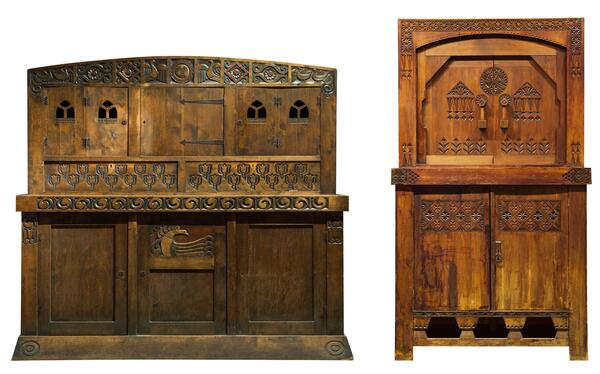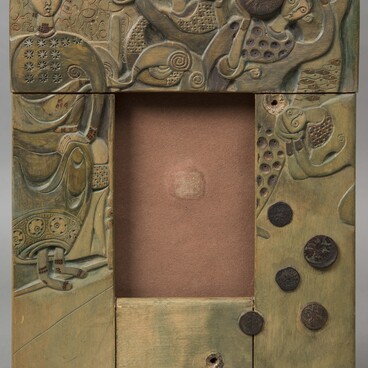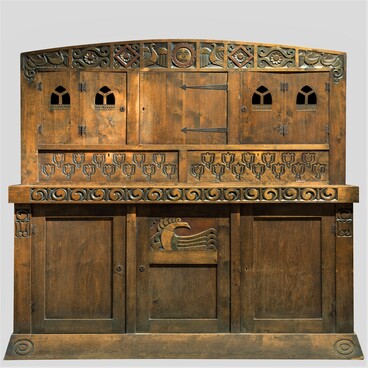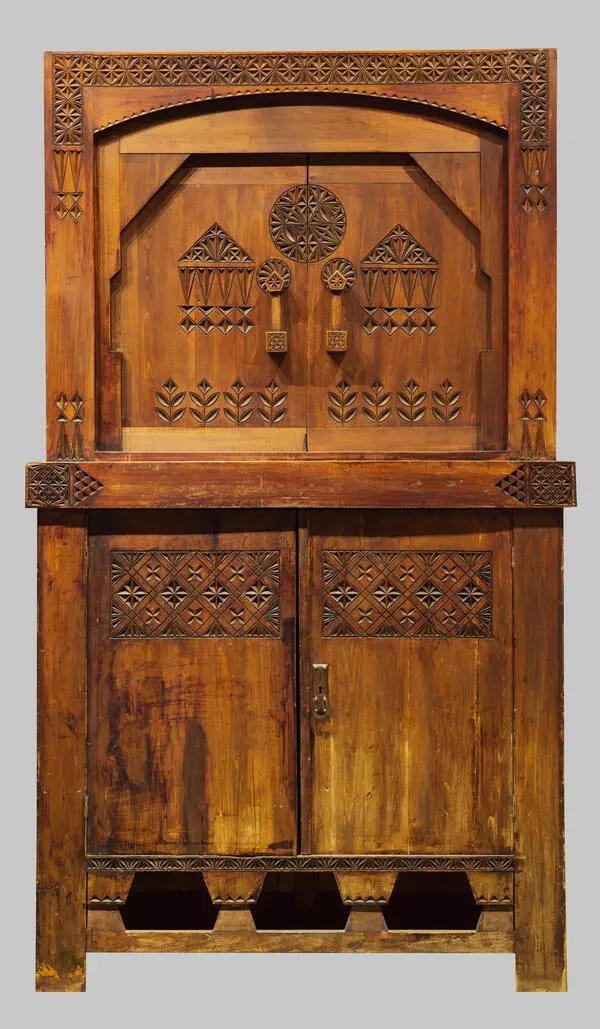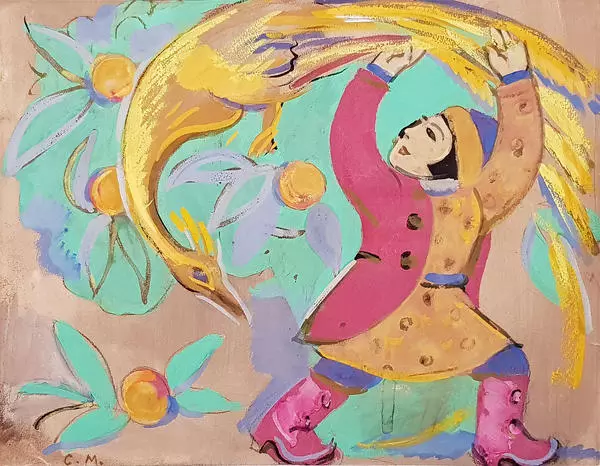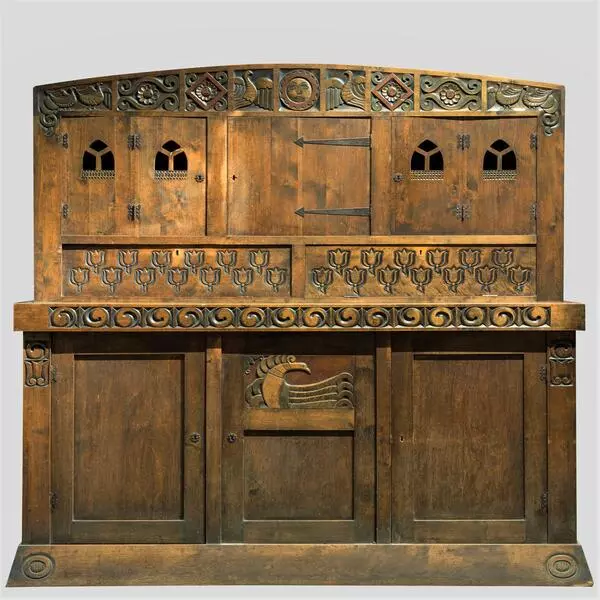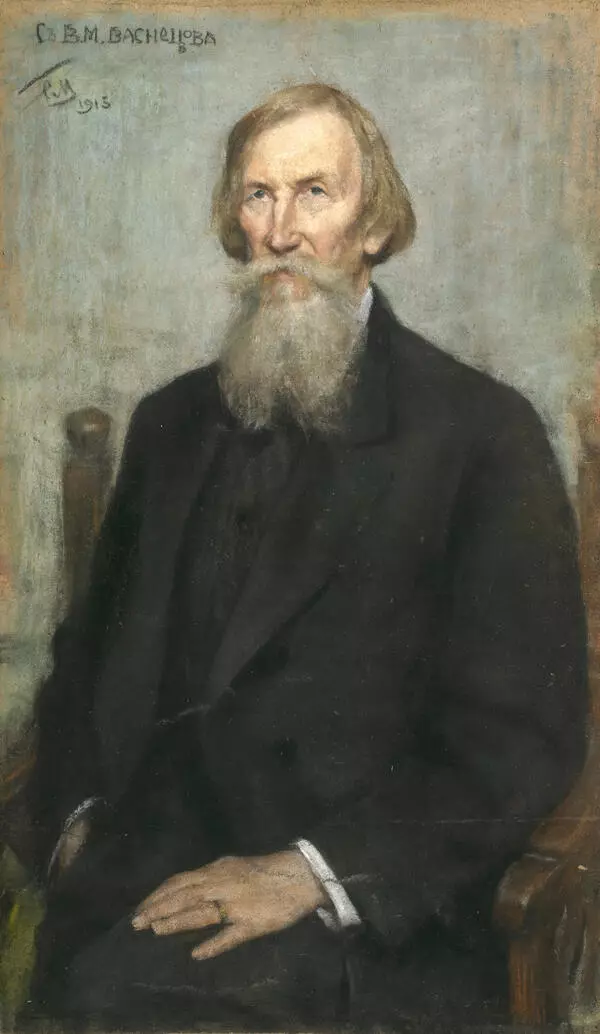In 1910, the Museum of Samples, a subdivision of the Crafts Museum, was opened in Moscow. It contained a collection of traditional peasant art and works by artists. The museum soon established its own production, and a special creative group developed new designs for items in the Russian style.
Items designed by Vladimir Sokolov occupied a significant place in the collection of the Museum of Samples and in the assortment of the Handicraft Store. A graduate of the Moscow School of Painting, Sculpture and Architecture, who studied under the tutorship of Isaac Levitan, Vasily Polenov and Valentin Serov, in 1903, at the request of Savva Morozov, he headed the Artistic and Carpentry and Wood Carving Workshop in Sergiev Posad created by the Moscow Provincial County and worked there until the end 1920s. The workshop was engaged in organizing the production of modern handicrafts, made according to the projects of professional artists who worked in the Crafts Museum or collaborated with it. In addition to production, the workshop taught children to carve and paint on wood. The project turned out to be very successful — by the 1910s, the volume of production increased significantly. To fulfill orders, the workshop began to attract numerous handicraftsmen — artisans — from Sergiev Posad and the surrounding area.
Since 1916, Vladimir Sokolov independently learned the techniques of lithography and wood engraving. In 1927, he created an illustrated guide to the Sergiev History and Art Museum. And using the woodcut technique, he created about 50 ex-libris — book signs proving the identity of the book’s owner.
Most of the items presented in this section of the exposition were made in the Sergiev Posad art and carpentry workshop. Vladimir Sokolov came to the workshop, already a recognized painter, who actively participated in exhibitions of the Association of Itinerant Art Exhibitions and the “World of Art” association. He managed to create his own unique style, which is sometimes even called “Sokolovsky”. He decorated screens, caskets and chests, dishes, chiseled items with geometric carvings with pictorial inserts, mostly landscape ones.
Items designed by Vladimir Sokolov occupied a significant place in the collection of the Museum of Samples and in the assortment of the Handicraft Store. A graduate of the Moscow School of Painting, Sculpture and Architecture, who studied under the tutorship of Isaac Levitan, Vasily Polenov and Valentin Serov, in 1903, at the request of Savva Morozov, he headed the Artistic and Carpentry and Wood Carving Workshop in Sergiev Posad created by the Moscow Provincial County and worked there until the end 1920s. The workshop was engaged in organizing the production of modern handicrafts, made according to the projects of professional artists who worked in the Crafts Museum or collaborated with it. In addition to production, the workshop taught children to carve and paint on wood. The project turned out to be very successful — by the 1910s, the volume of production increased significantly. To fulfill orders, the workshop began to attract numerous handicraftsmen — artisans — from Sergiev Posad and the surrounding area.
Since 1916, Vladimir Sokolov independently learned the techniques of lithography and wood engraving. In 1927, he created an illustrated guide to the Sergiev History and Art Museum. And using the woodcut technique, he created about 50 ex-libris — book signs proving the identity of the book’s owner.
Most of the items presented in this section of the exposition were made in the Sergiev Posad art and carpentry workshop. Vladimir Sokolov came to the workshop, already a recognized painter, who actively participated in exhibitions of the Association of Itinerant Art Exhibitions and the “World of Art” association. He managed to create his own unique style, which is sometimes even called “Sokolovsky”. He decorated screens, caskets and chests, dishes, chiseled items with geometric carvings with pictorial inserts, mostly landscape ones.

